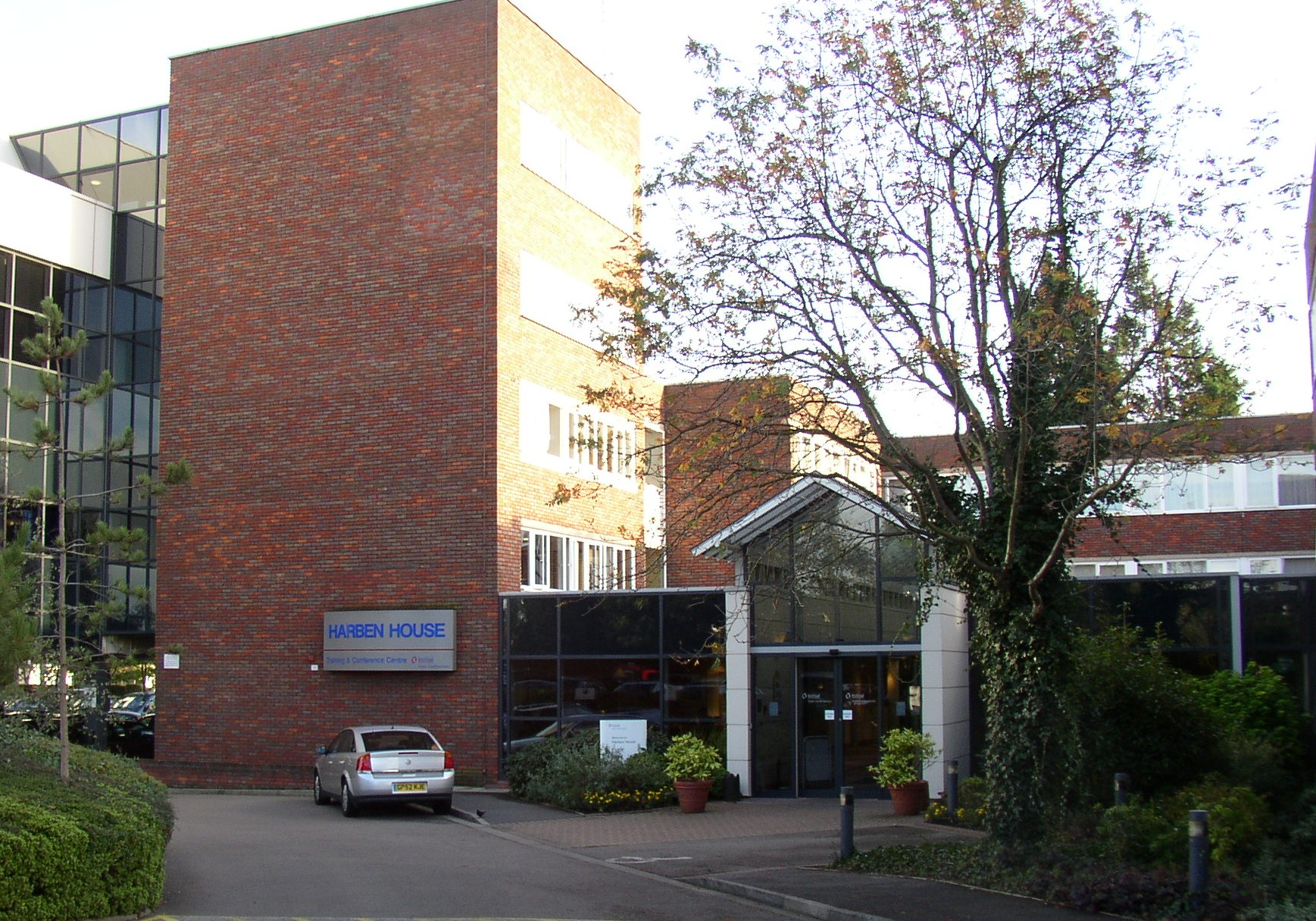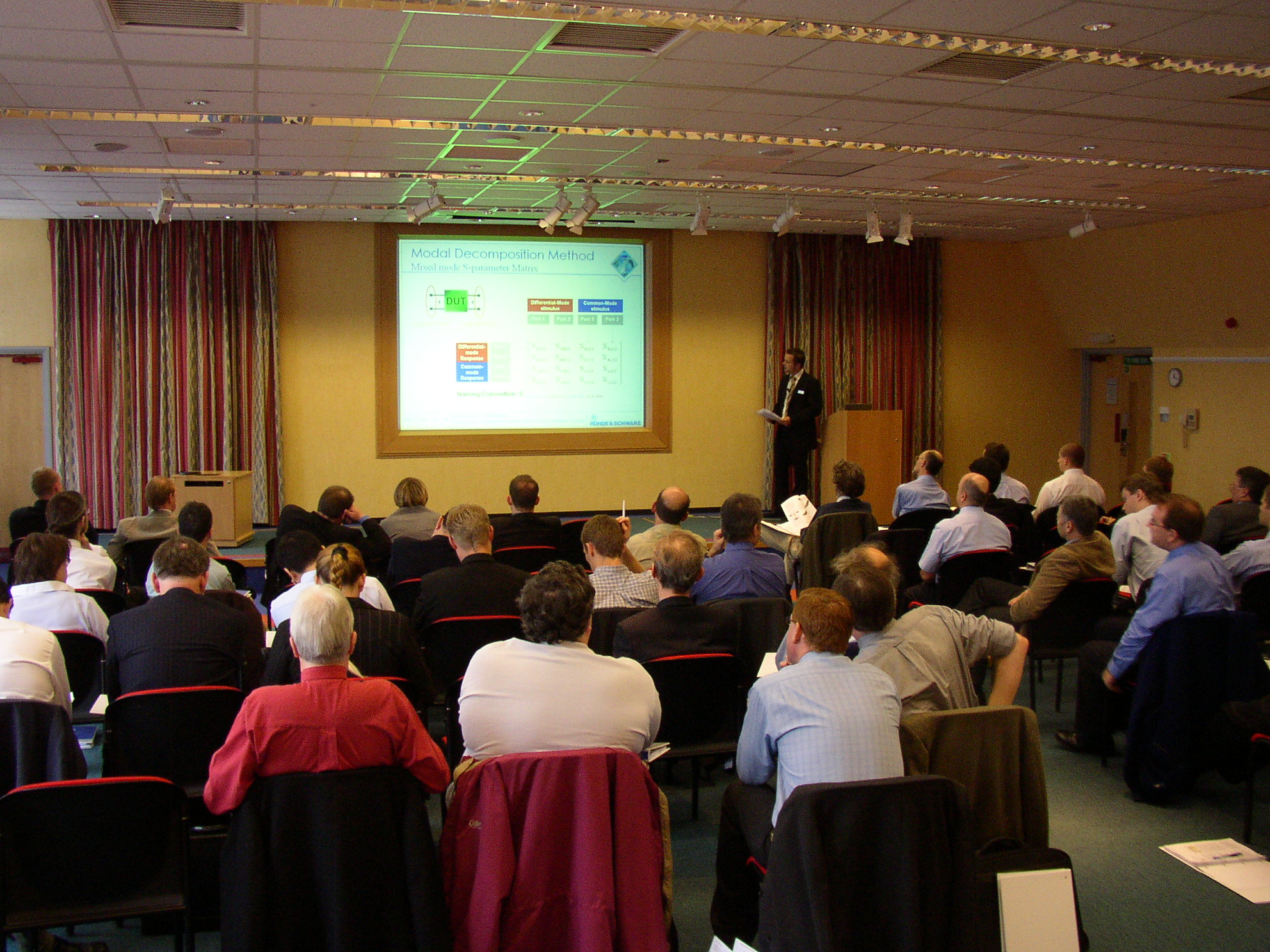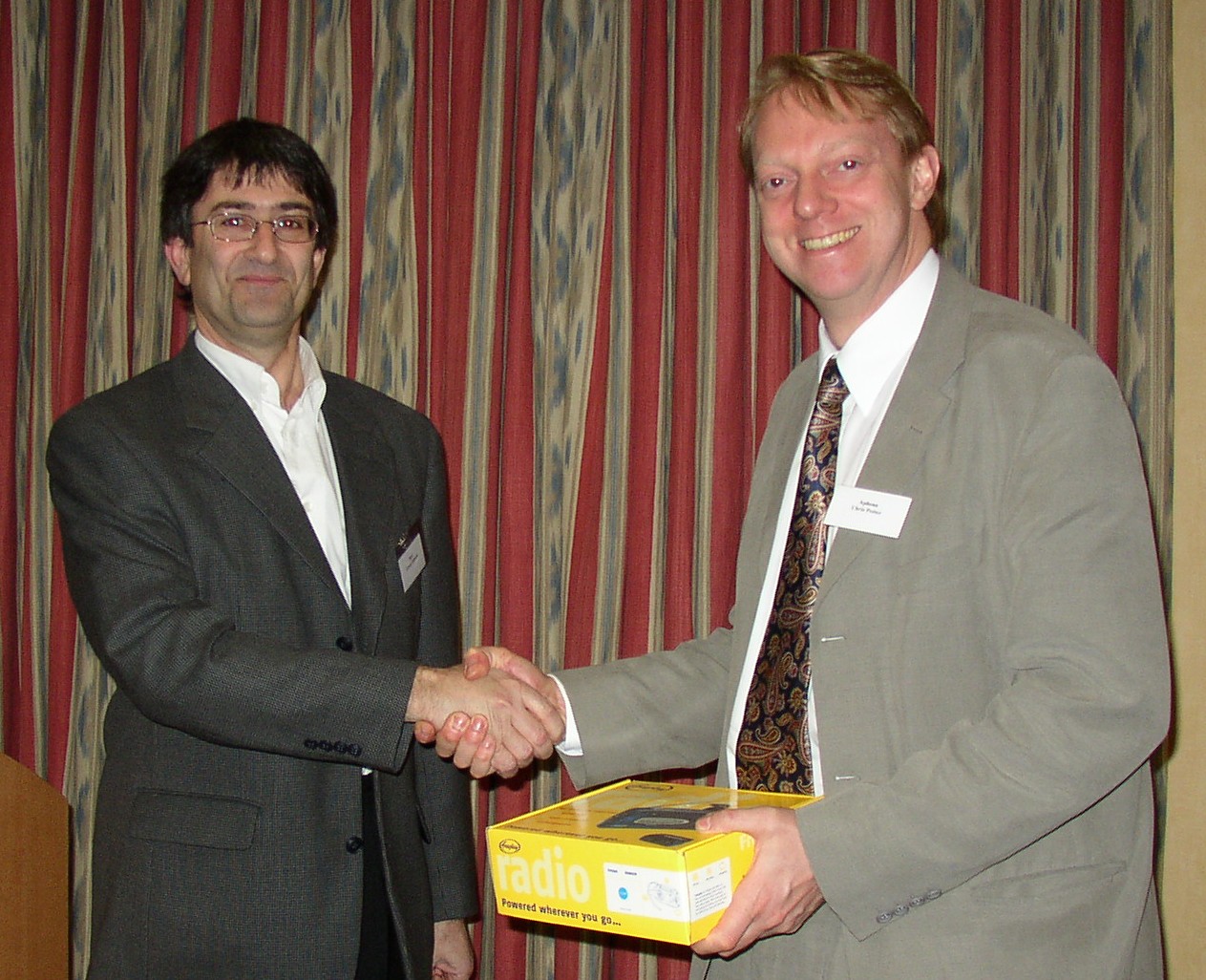 |  |  |
Harben House
Initial Style Conferences
Tickford Street
Newport Pagnell
Buckinghamshire
MK16 9EY
| Tel | 01908 215 600 |
| Fax | 01908 215 610 |
| Web | www.initialstyle.co.uk |
David Adamson
National Physical Laboratory
Building 72
Queens Road
Teddington
Middx TW11 0LW
| Tel | 0208 943 6965 |
| David.Adamson@npl.co.uk |
A deployed sensor network to monitor a floodplain | |
| Robert Roddis | |
| Multiple Access Communications Limited | |
| A description of our experiences while developing and deploying an ad hoc wireless sensor network for the FloodNet project which is part of the DTI NextWave Technologies and markets programme. The FloodNet network uses commercial off-the-shelf components to create an IP-based wireless ad hoc network using the IETF MANET Dynamic Source Routing protocol to gather measurements of tidal flooding in an inshore flood plain. These measurements provide real-time input to a high resolution flood plain model for predicting unusual flood events. The paper will focus on our approaches to reduce power consumption and implement network time synchronisation. | |
| A deployed sensor network to monitor a floodplain | |
Exploitation of direct digital synthesis for sweep generation in FMCW radar. | |
| GD Morgan, PDL Beasley, KE Ball | |
| QinetiQ | |
| Continuous wave radars, unlike their pulsed counterparts, can not intrinsically determine target range and need to modulate their transmission to be able to do so. Frequency modulated continuous wave radars (FMCW) discern target range by cyclically ramping the output frequency and calculating range from the frequency difference between the transmitted and received signals. Voltage controlled oscillators (VCO) have traditionally provided a cost effective solution to this frequency modulation. This paper addresses a solution based on direct digital synthesis (DDS) and discusses the impact of both these solutions in terms of cost and radar performance. | |
| Exploitation of direct digital synthesis for sweep generation in FMCW radar. | |
How better can NPL and Industry work together: Electromagnetic Formulation 2006-2009 | |
| Martin Bate | |
| National Physical Laboratory | |
| The Electromagnetic Metrology programme formulation for 2006 to 2009 is happening now. This is industry?s and academia?s chance to influence the formulation of the next DTI-funded programme that will begin in October 2006. The current Electromagnetic Metrology programme is one of the main science programmes within the Division for Enabling Metrology funded by the Department of Trade and Industry\'s National Measurement System Directorate. The main programme theme areas will be defined in the course of consultation with industry, academics and other stakeholders during the early stages of programme formulation. At this stage in the process we are interested in obtaining views on the measurement requirements that will be important on a three to five year time scale in the main industry sectors in the UK. Industrial and academic researchers can benefit by helping to align and define the work of the NMS Electromagnetic Metrology programme with their own projects and programmes, or with rojects that they intend to bid for via Research Council or DTI and EU applied research programme funding. In this way their future measurement and standards requirements can be delivered at no direct extra cost to their projects. | |
| How better can NPL and Industry work together: Electromagnetic Formulation 2006-2009 | |
Low loss, low cost, Discrete PIN diode based, microwave SPDT and SP4T switches | |
| Liam Devlin | |
| Plextek | |
This paper describes the design, implementation and measured performance of low loss microwave Single Pole Double Throw (SPDT) and Single Pole 4-Throw (SP4T) switches. The switch designs use beam-lead packaged PIN diodes, SMT resistors and capacitors and printed components on a low cost Rogers\' RO4003 substrate. The operating frequency range is 12GHz to 19GHz and the measured insertion loss is 0.85dB for the SPDT and 1.8dB for the SP4T. The switch can handle RF input power levels of at least 2W without any significant compression. The project was undertaken by Plextek's microwave design team. | |
| Low loss, low cost, Discrete PIN diode based, microwave SPDT and SP4T switches | |
Planning and design of front-end filters and diplexers for radio link applications | |
| Kjetil Folger? and Jan Kocbach | |
| Nera | |
| High capacity radio links with data rate up to 155 Mbps per channel operating in the frequency range from 4 GHz to 40 GHz are used in mobile infrastructure and backbone networks. The frequency bands are crowded, and therefore subject to strict regulation from national and international governing bodies. Despite efforts of standardization, there exist numerous region-specific requirements to which equipment manufacturers must comply. Hence, there is a need for a large number of filters and diplexers to cover the complete range of frequencies. It is important with efficient planning and short design cycles when such a large number of variants are to be designed. This paper describes an efficient way of planning and designing front-end diplexers using automated design procedures and commercial electromagnetic solvers. | |
| Planning and design of front-end filters and diplexers for radio link applications | |
Practical measurements improve UHF yagi antennas | |
| Chris Potter | |
| Cambridge RF | |
| Antennas now sold for domestic Freeview reception have to meet guidelines concerning their performance. This paper describes the steps taken to improve an existing antenna design to meet the guidelines. During the design phase, antenna measurement techniques and troubleshooting methods had to be developed. These are described together with practical results and findings. | |
| Practical measurements improve UHF yagi antennas | |
Simulation nonsense - pitfalls in system simulation | |
| Simon Day | |
| Phasor Design | |
| The complexity of modern radio systems means that system simulation by numerical methods has become an essential tool in the design of wireless productions. System simulation encompasses a wide range of disciplines: propagation, antennas, analogue hardware, DSP, embedded software and so on. There are a number of system simulation products available in the market place, however this paper seeks to identify potential pitfalls, which are common to all such products. It looks at fundamental principles and so is independent of any specific software tool. The aim is to allow the reader to chuckle at the author?s mistakes, and avoid those same errors themselves. A typical pitfall is to insufficiently accurately describe the signal, which can lead to subtle and not so subtle problems. A statistical approach, unfortunately, becomes necessary as both the noise and the signal can have random properties; the outcome is that old quotation about statistics becomes applicable. The way in which the very large data sets are reduced in size in order to make simulation times reasonable may also have bizarre effects. The well-known distinction between verification and validation is also introduced. Finally a specific case is examined to illustrate some of the points that have been introduced. The development of an airborne radio system is used, with the permission of Navtech Systems Limited, to shown that radio system design is a truly multidisciplinary endeavour. | |
| Simulation nonsense - pitfalls in system simulation | |
System solutions using MMW sensors | |
| Roger Hopper | |
| Roke Manor Research | |
| MMW technology has historically been used for high spec military applications but the lower costs and increased accessibility of this technology enable it to be more widely applied. Roke Manor Research has extensive experience in using this technology and two specific case studies will be presented to illustrate the approach of providing system solutions using MMW technology. These are based upon the PandoraTM System and the Miniature Radar Altimeter (MRA). These represent two different approaches one being a customer driven requirement and one being a technology driven solution. | |
| System solutions using MMW sensors | |
The challenges of mobile handset antenna design | |
| John Hunt | |
| Roke Manor Research | |
| - | |
The design and analysis of ferrite components for beam forming networks | |
| Imtiaz Khairuddin | |
| ComDev Europe | |
| In the rapidly evolving global telecommunications industry, switching and routing of signals through, communications satellites that may have in orbit lifetimes of fifteen years, must offer the flexibility for a communication payload to reconfigure its antenna beam patterns after the spacecraft has been placed in orbit. This flexibility is achieved within the stringent requirements of size, mass, cost, power handling, power consumption, reliability and technical risks that are carried for all satellite payloads. Latched ferrite waveguide components such as switches and phase shifters are still the most popular technologies in the applications of switched and variable BFNs (beam forming networks) employed in space communications. These are considered to be favourable over competitive technologies they offer low loss, high reliability, hot switching, low power consumption and superior non-linear performance at high power. The choice of the most suitable ferrite material is dictated by the operational frequency, insertion loss, switching time, phase accuracy (for phase shifters), power consumption and power handling. The paper presents the brief guideline for the design and analysis of latched ferrite switches and phase shifters for the space applications. The paper focuses on a ka band design and is illustrated with a number of animated plots from 3D EM and magnetostatic analysis. Finally, the theoretical and practical results are compared. | |
| The design and analysis of ferrite components for beam forming networks | |
The use and validation of electromagnetic modelling for the prediction of installed antenna performance | |
| Mike Hook, James Eastwood and James Archer | |
| Vector Fields | |
| - | |
Transient simulations of RF and high date rate circuits | |
| Malcolm Edwards | |
| AWR | |
| - | |
| Transient simulations of RF and high date rate circuits | |
Using coaxial air lines as standards of phase at RF and microwave frequencies | |
| Stephen Protheroe and Nick Ridler | |
| National Physical Laboratory | |
| Air lines are often used as impedance references to evaluate the magnitude uncertainty in vector network analyser (VNA) calibrations using the so-called ripple technique. However, there is as yet no comparable technique for assessing the associated phase uncertainty. By means of practical measurement, this paper demonstrates the difficulty in assessing phase uncertainty using air lines and describes why this is caused by a lack of knowledge concerning the conductor loss in the lines. | |
| Using coaxial air lines as standards of phase at RF and microwave frequencies | |
WLAN system analysis & system design flow | |
| Joel Kirshman and Andy Wallace | |
| AWR | |
| This paper will bring together some (limited) theory surrounding the 802.11a Wireless LAN specification with the ability to look at trade off options within AWR?s simulation software for various configurations for the system design. OFDM definition, along with its benefits will be discussed using practical analysis to clearly identify a realistic scenario. With emphasis on the receiver, the link budget will be calculated, providing exact specifications for the constituent parts of the chain. Simulation of Bit Error Rate (BER) to produce an operational system with be covered. Finally, bringing together these ideas, a possible amplifier will be proposed along with error correction techniques. These ideas are brought to fruition in a final design, again simulated within the software tools. Although the presentation revolves around a WLAN application, the system analysis approach and methodology presented is applicable to any wireless or wired application. AWR?s system simulator is a sampled time-domain, complex-envelope system simulator will be used throughout the presentation. | |
| WLAN system analysis & system design flow | |
A table top exhibition will run along side the conference. If you would like to participate in the exhibition please contact JJ Heath-Caldwell on 0845 0950 056
Contributions are invited with an emphasis on RF and microwave design, research, testing and associated subjects. An oral presentation will be made at the meeting and a written paper will be required for publication in the society digest, which is distributed to delegates at the meeting. Prospective speakers are requested to submit a title and a short abstract to the technical coordinator (see above) as soon as possible.
Click here to view our Guidelines for Authors
Click here to view our Publication Release Form